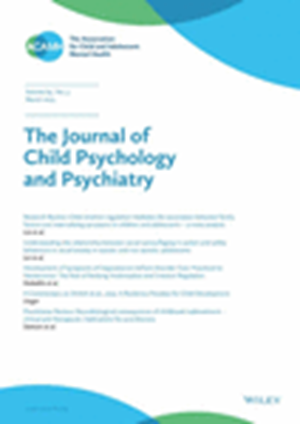了解青少年抑郁与成年后不稳定就业之间的联系:来自兄弟姐妹固定效应分析的证据
IF 7
1区 医学
Q1 PSYCHIATRY
引用次数: 0
摘要
青少年抑郁症状可能标志着长期社会经济劣势轨迹的开始,但其在塑造劳动力市场结果方面的作用仍未得到充分研究。本研究探讨青少年抑郁症状与成年后不稳定就业的纵向关系,并探讨持续抑郁症状与受教育程度的中介作用。方法采用全国青少年至成人健康纵向研究中的3703名全兄弟姐妹样本,采用兄弟姐妹固定效应模型来控制未观察到的家庭水平混杂。成年后的不稳定就业是通过一个多维指数来衡量的,该指数反映了工作不稳定、物质不安全、缺乏福利和有限的决策自主权。结果青少年抑郁症状与成年后不稳定就业呈正相关(b = 0.0165, p < 0.01),即使在调整了家庭混杂因素后也是如此。没有观察到显著的性别差异。中介分析显示,青年期随后出现的抑郁症状约占该关联的23.0%,而受教育程度又占18.9%,与后来的抑郁症状无关。结论青少年抑郁症状是成年后就业不稳定的重要早期风险因素。研究结果强调了早期心理健康干预的重要性,并表明在青春期改善情绪健康和教育成果可能会减少长期的社会经济劣势。本文章由计算机程序翻译,如有差异,请以英文原文为准。
Understanding the link between adolescent depression and precarious employment in adulthood: evidence from a sibling fixed effects analysis
BackgroundAdolescent depressive symptoms may mark the beginning of long‐term trajectories of socioeconomic disadvantage, yet their role in shaping labor market outcomes remains understudied. This study investigates the longitudinal association between depressive symptoms in adolescence and precarious employment in adulthood and explores the mediating roles of persistent depressive symptoms and educational attainment.MethodsUsing a sample of 3,703 individuals from full sibling pairs in the National Longitudinal Study of Adolescent to Adult Health, we employed sibling fixed effects models to control for unobserved family‐level confounding. Precarious employment in adulthood was measured using a multidimensional index reflecting job instability, material insecurity, lack of benefits, and limited decision‐making autonomy.ResultsAdolescent depressive symptoms were positively associated with precarious employment in adulthood (b = 0.0165, p < .01), even after adjusting for family‐level confounders. No significant gender differences were observed. Mediation analyses revealed that subsequent depressive symptoms in young adulthood mediated approximately 23.0% of this association, while educational attainment accounted for an additional 18.9%, independent of later depressive symptoms.ConclusionsThese findings highlight adolescent depressive symptoms as a significant early risk factor for employment precarity in adulthood. The results underscore the importance of early mental health interventions and suggest that improving emotional well‐being and educational outcomes during adolescence may reduce long‐term socioeconomic disadvantage.
求助全文
通过发布文献求助,成功后即可免费获取论文全文。
去求助
来源期刊
CiteScore
13.80
自引率
5.30%
发文量
169
审稿时长
1 months
期刊介绍:
The Journal of Child Psychology and Psychiatry (JCPP) is a highly regarded international publication that focuses on the fields of child and adolescent psychology and psychiatry. It is recognized for publishing top-tier, clinically relevant research across various disciplines related to these areas. JCPP has a broad global readership and covers a diverse range of topics, including:
Epidemiology: Studies on the prevalence and distribution of mental health issues in children and adolescents.
Diagnosis: Research on the identification and classification of childhood disorders.
Treatments: Psychotherapeutic and psychopharmacological interventions for child and adolescent mental health.
Behavior and Cognition: Studies on the behavioral and cognitive aspects of childhood disorders.
Neuroscience and Neurobiology: Research on the neural and biological underpinnings of child mental health.
Genetics: Genetic factors contributing to the development of childhood disorders.
JCPP serves as a platform for integrating empirical research, clinical studies, and high-quality reviews from diverse perspectives, theoretical viewpoints, and disciplines. This interdisciplinary approach is a key feature of the journal, as it fosters a comprehensive understanding of child and adolescent mental health.
The Journal of Child Psychology and Psychiatry is published 12 times a year and is affiliated with the Association for Child and Adolescent Mental Health (ACAMH), which supports the journal's mission to advance knowledge and practice in the field of child and adolescent mental health.

 求助内容:
求助内容: 应助结果提醒方式:
应助结果提醒方式:


